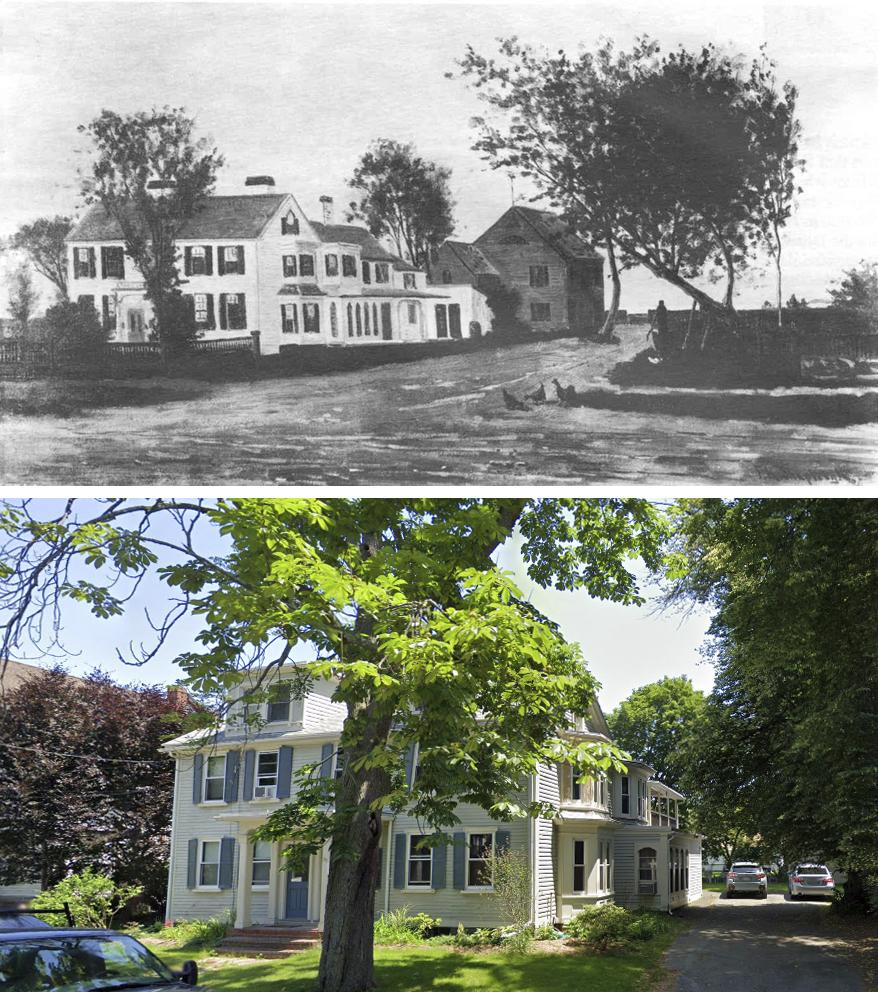
Dorchester Illustration 2558 Preston House
The watercolor painting at the top of today’s illustration was painted by Frank Henry Shapleigh, a noted fine art painter who visited Dorchester in the 1870s. The illustration was published in A History and Guide to the Restoration of Dorchester Shores, (Metropolitan District Commission, 1989). The photograph below shows the house as displayed in Google Street View.
The original house seems to have followed the pattern of New England farm houses: big house, little house, back house and barn, all attached in a row. Although the barn and back house have disappeared, the house at 32 Mill Street is still a significant part of the Dorchester landscape.
The house appears on the 1831 map of Dorchester and was probably built in the decade preceding. It was the home of Elisha Preston, a merchant involved in the West India Trade and one of the major figures in the Commercial Point whaling industry. Originally occupying a large tract of land which remained in the family through the 1870s, in mid-century this house was the residence of John Preston, the owner of a chocolate and cocoa mill located on Commercial Point.
During the 1830s, the whaling the syndicate began to buy up enormous tracts of land at both Commercial and Clam Points. One of the partners, Elisha Preston, also considerably augmented his own already-extensive land holdings. In addition to land, Preston had inherited the family chocolate and cocoa business begun by his father in Lower Mills, and moved the business to Commercial Point during the 1830s. Preston is believed to have built the Federal Italianate style, center-hall plan, residence at 32 Mill Street. Elisha’s son John Preston inherited the house, business, and extensive land holdings. The property included a large rectangular garden, now the site of a pair of modem tract houses at 36-38 Mill Street.
